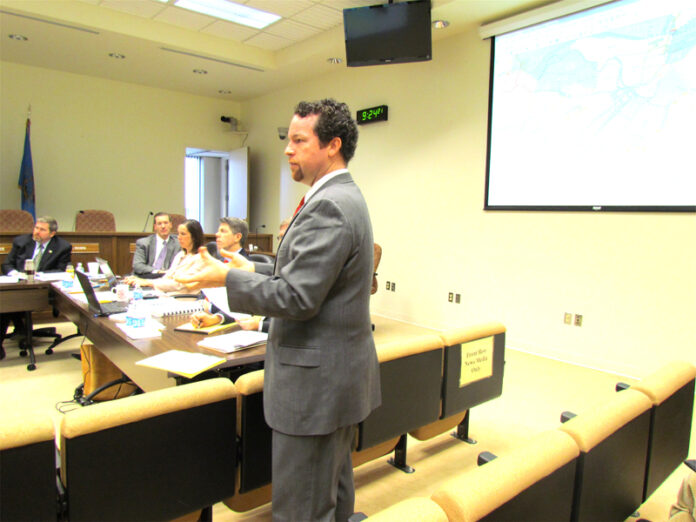
In September 2011 Electoral Board member Melvin Williams presented a plan to combine six Roanoke City voting precincts. At the time, Williams said council wanted them to go back and create something like a “task force” made up of constituencies including the SCLC, NAACP, members of the Mayor’s Commission on Disabilities and neighborhood groups.
At Tuesday morning’s briefing, Williams was back with a whole new plan. “We started from scratch,” he said. The mandate was to keep the precincts “compact and contiguous.”
The proposed plan would reduce the 32 precincts to 19. The 32 precincts “have been in place as long as anyone can remember,” said Williams. The five precincts outside the 11th House of Delegates would remain in the 17th district to prevent voter confusion and the split of precincts.
The city’s GIS map expert Kenny Harris used software to rearrange different district scenarios. In the end each district’s population of registered voters was kept to under the recommended maximum of 5000. “The state board red flags when a precinct gets over 4000 registered voters,” said Williams.
Also considered were normal boundary landmarks – rivers and streams, railroad tracks and streets. Neighborhood organizations were taken into account in defining communities of interest.
Precincts in Raleigh Court and Wasena were the most challenging due to the large population of registered voters and landmark locations.
The proposed plan would require Registrar Laverne Shepherd to locate two new polling places – one in Northwest that would be west of Peters Creek Road and another around Colonial Avenue. Potential locations have been identified, but it was too early for them to be contacted, said Williams.
Williams explained how the plan would reduce polling stations, resulting in $11,000 of saving in personnel for each election. Additional savings would be realized with a reduction of paid technicians. They transport voting machines to the polling places and remain on-call for problems. The goal was to keep the best polling places and maximize access to bus service.
No changes can take effect until December 31 of any given year. Included in that time frame would be Department of Justice approval that usually takes 60 days.
After public input, Vice Mayor Dave Trinkle wanted council’s concurrence on the lines followed by selecting the new polling places in time to meet the December 31, 2012 deadline. The DOJ would have to approve the realignment before that date.
Acting City Attorney Tim Spencer explained to Councilman Sherman Lea that the DOJ would scrutinize the location of the polling places, the number of voters in each precinct, the racial makeup and the distance from a polling station to each voter in a precinct. It must be no more then one mile. He said that the DOJ also “looks at what type of polling places you have – schools, churches or other. It needs to be an open inviting locale for anyone with any background to come and vote.”
Registrar Laverne Shepherd said she gets calls from the DOJ and they ask her questions especially on distances to polling places. They also make calls to citizens – especially minorities.
Rev. Tinsley said, “this is long overdue.” Gordon Hancock chimed in, lamenting on the difficulty they have had in finding polling places where the “handicapped can roll in and out smoothly – that is a nightmare.” Williams was praised for ensuring the “difficult to find” polling locations were kept within the redrawn precincts.
Hancock, Rev. Tinsley and Shepherd praised both Harris and Williams for the long hours they put into aligning the precincts.
Should the proposal be approved by December 31, 2012, the first election would be the gubernatorial primary in 2013.


